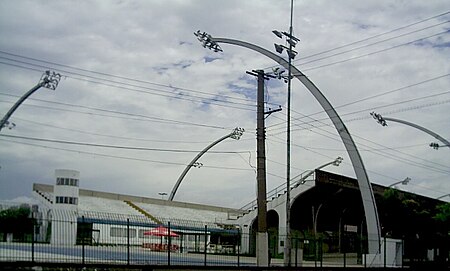Anhembi Sambadrome
Oscar Niemeyer buildingsSambadromeSão Paulo CarnivalTourist attractions in São Paulo

The Polo Cultural e Esportivo Grande Otelo, commonly known as Anhembi Sambadrome, is a Sambadrome and one of the largest outdoor venues for major events in the city of São Paulo in Brazil. It opened in 1991, and has a capacity of 103,200 people. It hosts around 30 events per year, including the São Paulo carnival, Independence Day celebrations, and music events.
Excerpt from the Wikipedia article Anhembi Sambadrome (License: CC BY-SA 3.0, Authors, Images).Anhembi Sambadrome
Avenida Olavo Fontoura, São Paulo
Geographical coordinates (GPS) Address Phone number Website External links Nearby Places Show on map
Geographical coordinates (GPS)
| Latitude | Longitude |
|---|---|
| N -23.516388888889 ° | E -46.646388888889 ° |
Address
Polo Cultural e Esportivo Grande Otelo
Avenida Olavo Fontoura 1209
02012-021 São Paulo (Santana)
São Paulo, Brazil
Open on Google Maps






